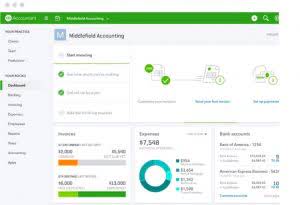Working Capital Ratio: Definition & How to Calculate

The gross working capital formula measures a company’s total current assets, while the net working capital formula measures a company’s retained earnings current assets minus its current liabilities. These formulas can be useful for different types of analysis, depending on the needs of the investor or analyst. Current assets are the assets that a company expects to convert into cash within one year. Some examples of current assets include cash, accounts receivable, and inventory. In the case of working capital ratio, assets are typically defined as cash, inventory, accounts receivable, and short-term investments. Liabilities are the business’s debts, including accounts payable, loans, and wages.
Balance Sheet
- Since people within a company have more detailed information, the concepts we used for the total inventory can also be applied to each and every item in inventory.
- A company increases its risk of bankruptcy if it can’t meet its financial obligations no matter how rosy its future growth prospects might be.
- The cost of capital is also important as it affects the amount of working capital required to generate a certain level of profit.
- Working capital measures a business’s operating liquidity—it illustrates how much readily available cash and assets the business has to cover day-to-day expenses and keep operations running smoothly.
- This means that the firm would have to sell all of its current assets in order to pay off its current liabilities.
- This financial flexibility enables a company to maintain efficient operations and meet obligations like payroll, rent, and supplier payments on time.
The working capital metric is relied upon by practitioners to serve as a critical indicator of liquidity risk and operational efficiency of a particular business. Seasonal working capital is the amount of money a business needs during its peak season. Businesses with seasonal demands require additional working capital, usually on a temporary basis when customer demand is high. Permanent working capital is the capital required to make liability payments before the company is able to convert assets or client invoice payments into cash. A long cycle will pressure a company who may not have enough cash on hand to pay bills as they come due.
Days Working Capital (DWC)

This blog dives deeper into the working capital ratio, its definition, type and calculation method, its interpretation and improvement strategies. In the technology industry, working capital is necessary for research and development, as well as for marketing and advertising. Technology companies may also need to have enough working capital to cover the cost of hiring and retaining top talent. For the past 52 years, Harold Averkamp (CPA, MBA) hasworked as an accounting supervisor, manager, consultant, university instructor, and innovator in teaching accounting online. For the past 52 years, Harold Averkamp (CPA, MBA) has worked as an accounting supervisor, manager, consultant, university instructor, and innovator in teaching accounting online. Adam Hayes, Ph.D., CFA, is a financial writer with 15+ years Wall Street experience as a derivatives trader.
Reporting Working Capital, Current Assets, Current Liabilities
As the expenses are used or expire, expense is increased and prepaid expense is decreased. A balance sheet line that includes cash, checking accounts, and certain marketable securities that are very close to their maturity dates. Since the above items will have an unfavorable or negative effect on a company’s liquidity, the respective amounts will appear on the SCF in parentheses. When a customer uses a business credit card, the customer will be given 27 to 57 days in which to pay the credit card company. In addition, the customer may receive a 2% cash rebate from the credit card company. Other factors include the credit terms that are allowed by the company’s suppliers, the company’s profitability and growth rate, the time required to complete a customer’s order, and more.
Therefore, as of March 2024, Microsoft’s working capital metric was approximately $28.5 billion. If Microsoft were to liquidate all short-term assets and extinguish all short-term debts, it would have almost $30 billion remaining cash. Most major new projects, like expanding production or entering into Retail Accounting new markets, often require an upfront investment, reducing immediate cash flow.

Working capital is an essential aspect of any business operation, and it varies depending on the industry. In the landscaping industry, working capital is crucial in ensuring that the business can purchase equipment, supplies, and materials needed for the job. Landscapers may also need to have enough working capital to pay for labor and other expenses, such as marketing and advertising. This includes interest that is due within one year on loans, bonds, and other forms of borrowing. Businesses tend to calculate working capital ratio on a regular basis due in part to its ability to reflect working capital position changes over time accurately.
- In the technology industry, working capital is necessary for research and development, as well as for marketing and advertising.
- In contrast, negative working capital indicates liquidity issues, which may lead to late payments, higher debt and financial strain.
- In this case, the retailer may draw on their revolver, tap other debt, or even be forced to liquidate assets.
- Working capital ratio is one of the most common ways of representing working capital position, alongside net working capital (which is simply current assets minus current liabilities).
Revenue Recognition

The ratios are the current ratio, the collection ratio, and the inventory turnover ratio. Working capital management is a business strategy that companies use to monitor how efficiently they are using their current assets and liabilities. Working capital is the difference between a company’s current assets and current liabilities. Negative working capital occurs working capital ratio meaning when current liabilities exceed current assets, suggesting potential cash flow issues.

- Similarly, if the decreases in working capital and/or liquidity are due to unprofitable business operations, a person should also begin a series of “Why?
- The reason this ratio is called the working capital ratio comes from the working capital calculation.
- If a supplier sold merchandise to a company on credit, the supplier is a creditor.
- The current ratio of such entities significantly alters as the volume and frequency of their trade move up and down.
- For the past 52 years, Harold Averkamp (CPA, MBA) has worked as an accounting supervisor, manager, consultant, university instructor, and innovator in teaching accounting online.
- The income statement, statement of cash flows, statement of comprehensive income, and the statement of stockholders’ equity report information for a period of time (or time interval) such as a year, quarter, or month.
The current ratio is represented by a number and determines a business’s current assets in excess of its current liabilities. The working capital, on the other hand, is an absolute dollar amount and determines the cash and other liquid assets a business has to cover its short-term debts. Optimizing the working capital ratio is crucial for ensuring effective working capital management, maintaining a healthy financial position, and achieving operational excellence. A perfect balance between current assets and liabilities helps businesses unlock sustainable growth while maintaining a strong liquidity position.
